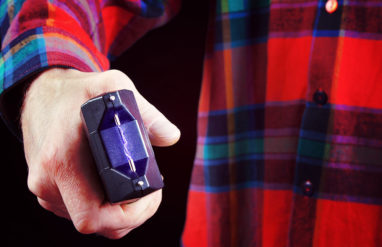What does manic pixie dream girl mean?
In 2007, film critic Nathan Rabin coined the term Manic Pixie Dream Girl in an attempt to classify Kirsten Dunst’s role in Elizabethtown. He first described this stock romantic character as a woman who “exists solely in the fevered imaginations of sensitive writer-directors to teach broodingly soulful young men to embrace life and its infinite mysteries and adventures.” Since the first appearance of Manic Pixie Dream Girl, Rabin officially apologized for the coinage in a thoughtful piece about this unwieldy term.
What’s wrong with manic pixie dream girl?
When Rabin first coined the term his intentions were noble. He was challenging filmmakers who propagated the portrayal of women as mere accessories to the men they happened to encounter. Rabin writes, “I felt as if I had tapped into something that had been part of our culture for a long time.” However, as the term picked up cultural currency, it morphed into something else entirely.
Taken out of context, the term lost its feminist undertones. The term Manic Pixie Dream Girl evolved from a fanciful cautionary tale to a living breathing thing. Real women, not just fictional ones, were given this label. Within only a few years, the term that Rabin coined to call out the unsettling “patriarchal lie” was seen as part of the problem.
Have there been similar problems with other newly coined words?
This is not the first time someone has apologized for a coinage run rampant. Just last year Stephen Fried wrote a similar apology for bringing the term fashionista into the world in what he called “a crime against nomenclature.” Like Rabin, Fried created a term that meant one thing—in this case, the entourage of people required on the set of a fashion photoshoot—but the term has since taken on many unintended meanings, including “fashion victim.” This unsuspecting word also launched the popularity of the already existing -ista suffix in the English language, for better or for worse. Fried didn’t mean to start anything. He just needed a word that didn’t happen to exist in English at the time.
Not all people credited as coiners want the attention. For many years, the geochemist Wallace Broecker was credited for coining the phrase global warming. Broecker, who was sure he wasn’t the one who coined the term, and offered a cash prize of $250 to any of his students who could antedate the term from before his 1975 paper “Climate Change: Are We on the Brink of a Pronounced Global Warming?”
One student collected this prize after finding citations of this term from the 1950s. Broecker was glad he could, once and for all, dispel the erroneous coinage credit for the term because he wanted people to focus on his more recent work.
Though Rabin did coin the term Manic Pixie Dream Girl, he doesn’t want to be known for it. In fact, he tries not to use the term in his film criticism these days because it has become so much of a cliché. In his apology for coining Manic Pixie Dream Girl, Rabin writes: “by giving an idea a name and a fuzzy definition, you apparently also give it power. And in my case, that power spun out of control.” I predict this epithet will stick around at least another seven years, despite having been disowned by its originator. Try as we might to control them, words have lives of their own.














